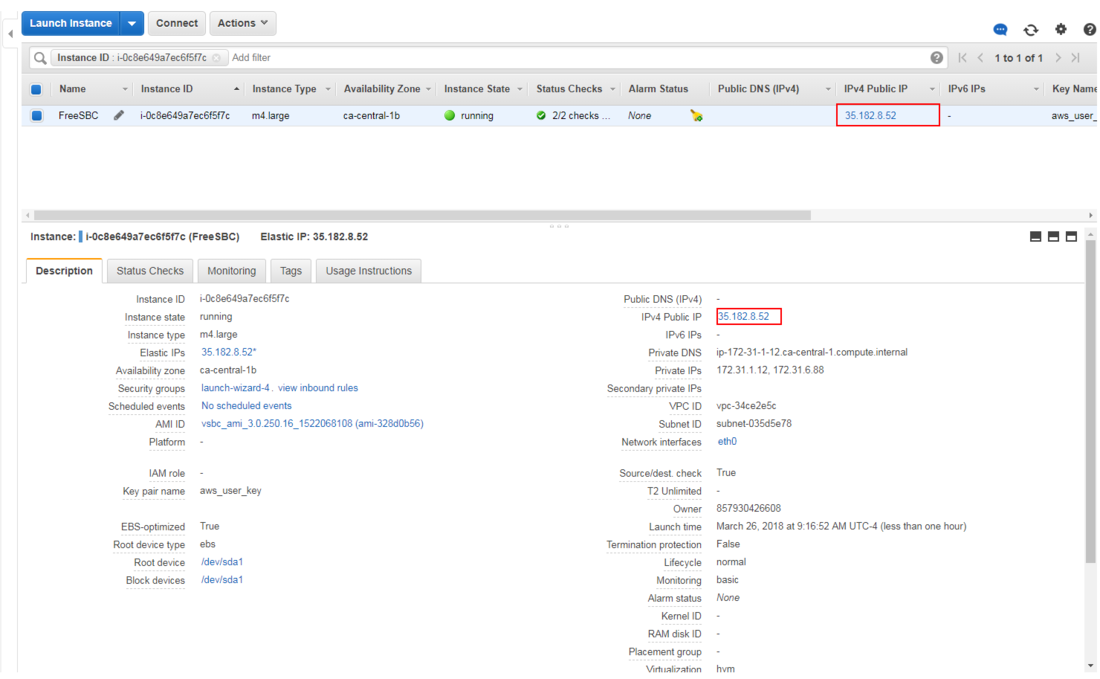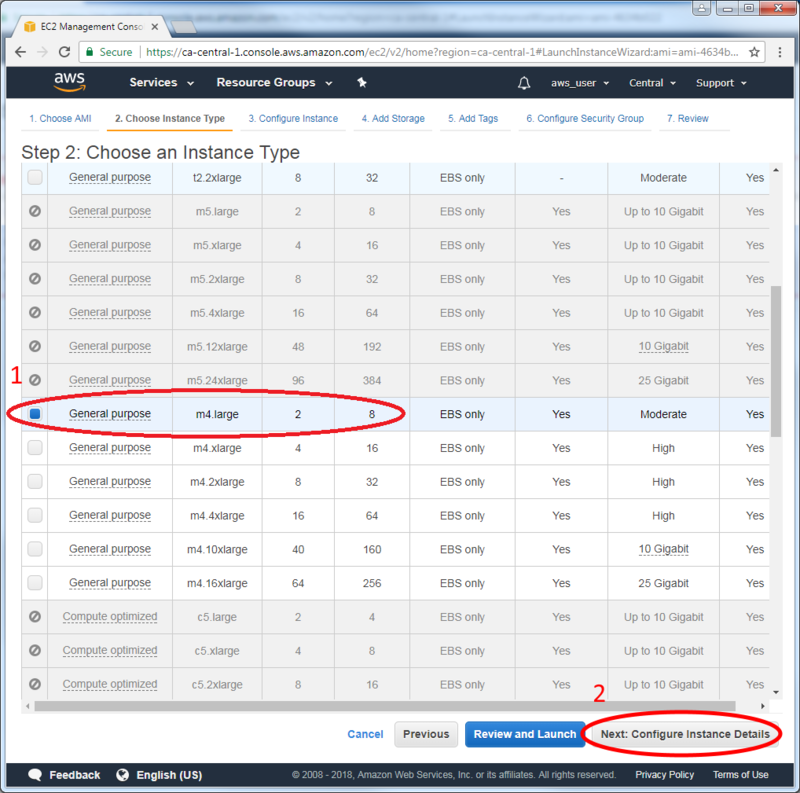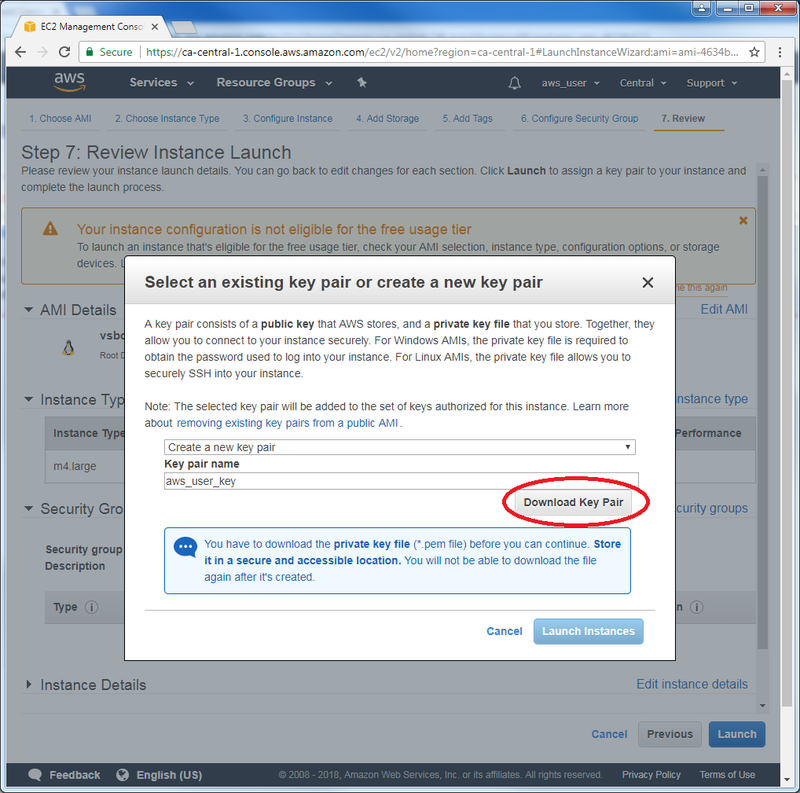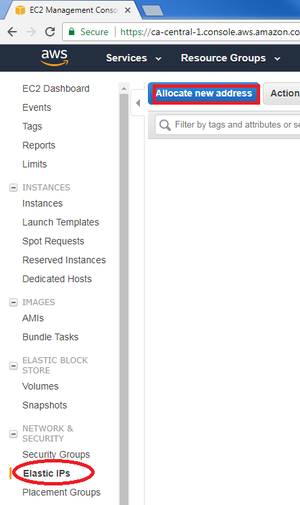FreeSBC:Cloud:AWS Installation A
From TBwiki
(Difference between revisions)
(update aws installation part 2) |
(update aws installation part 3) |
||
| Line 41: | Line 41: | ||
[[File:NextSecurityGroup.png| 800px]] | [[File:NextSecurityGroup.png| 800px]] | ||
| − | * Select "Create a new security group" ( | + | * Select "Create a new security group". You need at least 4 rules (Important: Adjust the source IPs to known IP addresses only): |
| − | + | ||
| − | + | ||
| − | + | ||
| − | + | ||
| + | {| class="wikitable" | ||
| + | |- | ||
| + | ! Rule !! Type !! Port Range | ||
| + | |- | ||
| + | | SSH || TCP || 22 | ||
| + | |- | ||
| + | | Web Portal || TCP || 12358 | ||
| + | |- | ||
| + | | SIP || UDP || 5060 | ||
| + | |- | ||
| + | | RTP || UDP || 20000-40000 | ||
| + | |} | ||
[[File:AddRule.png| 1000px]] | [[File:AddRule.png| 1000px]] | ||
Revision as of 14:50, 9 March 2018
This page is intended to give assistance to people launching an instance of FreeSBC using Amazon Machine Image (AMI) on Amazon Web Service (AWS). In the Troubleshot section, instructions are suggested for a potential issue that a user may encounter.
Contents |
Instantiate a FreeSBC
- After logging in your Amazon account, click on “EC2” in the main AWS console:
- On the left menu, click on “AMIs”:
- Click on the filter drop list and select “Private image” to locate FreeSBC AMI:
- Select the image and click “Launch”: (Check the troubleshooting section if you have a launching issues)
- Select the instance type and its resources. Supported instance type:
- m4.large (2 vCPU, 8 GiB)
- Choose an existing subnet from the list (Do not leave it to default):
- Click "Add Device" under Network Interface section (as FreeSBC requires 2 network interfaces)
- Click “Add Storage”:
- Change the Volume Size to 40Gb.
- Select "Volume Type": gp2
- Click “Add Tags”:
- You can leave the default parameters as they are.
- Click “Configure Security Group”:
- Select "Create a new security group". You need at least 4 rules (Important: Adjust the source IPs to known IP addresses only):
| Rule | Type | Port Range |
|---|---|---|
| SSH | TCP | 22 |
| Web Portal | TCP | 12358 |
| SIP | UDP | 5060 |
| RTP | UDP | 20000-40000 |
- Click “Review and Launch”:
- Click “Launch”. Please, note that FreeSBC is free of charges. However, you will still be charged by Amazon for using their resources that you allocated:
- You will be prompted to create a key pair, allowing you to securely connect to your instance. Select “Create a new key pair” if you do not own one, and give it a name. Then, click on “Download Key Pair” to download a .pem file since it is needed for a secured SSH connection:
- Click on “Launch Instances”:
- You can view your instance by clicking on “View Instances”:
- Select the instance you just created, and give a name:
- For your instance to become accessible, you need to associate a public IP generated by Amazon. Click on "Elastic IP" on the left, then click on "Allocate new address":








You are ready to connect to FreeSBC instance on AWS through the Web Portal.
Troubleshooting
If you come across the following issue, please follow the suggested instructions:
Launch Failed after step 4
Follow the link:


Test if FreeSBC is up and running in real-time
You can open a session of the image running CentOS7 and check the status of FreeSBC in real-time. Depending on your operating system, you can follow the links on Amazon guide to do so:
| Your Computer | Topic |
|---|---|
| Linux | Connecting to Your Linux Instance Using SSH |
| Windows | Connecting to Your Linux Instance from Windows Using PuTTY |
| All (using Firefox, Edge or Internet Explorer) | Connecting to Your Linux Instance Using MindTerm |

















